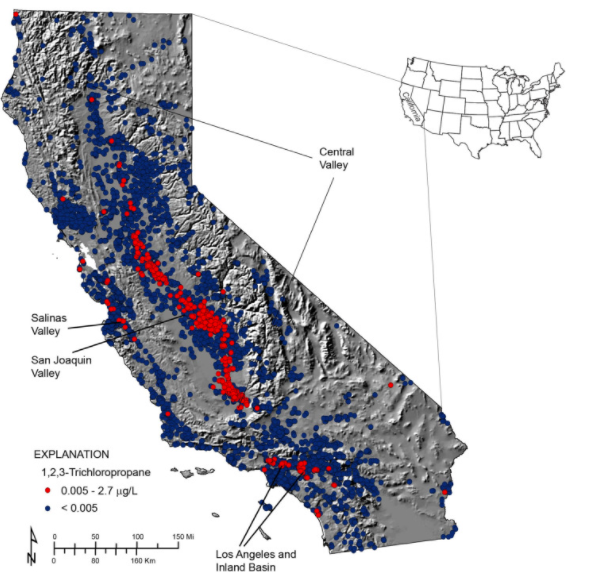What We're Learning
Changing Analytical Suites, Benchmarks, and Assessments--GAMA Program Response to Emerging Contaminants and Non-Regulatory Benchmarks
The GAMA program conducts groundwater quality sampling statewide and then compares the observed concentrations of constituents to benchmark concentrations to flag cases where source water may be above or close to drinking water standards When benchmarks change, assessments can also change.
In some cases, changes are required to keep pace with new understandings about emerging contaminants of concern. Many federal and state agencies have processes for evaluating these "contaminants of emerging concern" or "emerging contaminants" (for example, Murnyak and others, 2011) that include increased environmental and post-treatment monitoring to better document exposure and new toxicological studies to better document effects. The GAMA program responds to California's need for additional information on specific classes of emerging contaminants by both expanding the suite of chemicals analyzed in groundwater samples and by conducting contaminant-specific assessments. The story presented below describes how the GAMA program responded to concern over the fumigant 1,2,3-Trichloropropane (1,2,3-TCP) and Per- and Polyfluoroalkyl Substances (PFAS).
In the beginning of the GAMA program, non-regulatory benchmarks being evaluated by entities studying emerging contaminants were also included in study area assessments. The purpose for these was to both provide scientific information to emerging contaminant study groups and to provide for "early warning" to water resource managers of where and what concentrations of these unregulated chemicals were present in California's groundwater systems. Since that time, the focus of GAMA's assessment products has shifted to only include regulatory benchmarks. The Program is gradually recalculating the pie charts for early studies using this new set of benchmarks. The underlying information about emerging constituents is still available for scientific study.
1,2,3-TCP

Before 2014, the fumigant 1,2,3-Trichloropropane (1,2,3-TCP) was not regulated and thus excluded from water- supply management considerations. In 1999, 1,2,3-TCP was found in groundwater at a superfund site in Southern California, and the State began the process of issuing notifications, defining public health goals, and ultimately establishing an MCL of 0.005 µg/L in 2017. Because 1,2,3-TCP was also broadly used as a soil fumigant, the USGS began analyzing for the compound in its groundwater-quality studies.
GAMA conducted a systematic assessment of where and why 1,2,3-TCP could pose a risk to public drinking-water supplies (Burow and others, 2019) and found
- widespread detections in groundwater across California due to nonpoint agricultural sources
- high concentrations found in shallow, oxic groundwater beneath orchards and vineyards
- preferentially found in areas where coarse-grained sediments allow rapid recharge
- in the five sub-basins of the southeast San Joaquin Valley, GAMA has documented that about 20% of the aquifer system supplying domestic wells has 1,2,3-TCP over the MCL
PFAS
PFAS is a class of chemicals used in fire-retardant foam and fabric treatments, nonstick cookware, and food wrappers. They are widespread in the environment, do not easily degrade, and are linked to numerous health risks.
The GAMA program began analyzing for 24 PFAS compounds in 2019 and an additional 4 in 2020. Preliminary results from that work indicate that focused sampling of wells near areas suspected of PFAS contamination results in a dataset that overestimates the frequency of PFAS detection. When samples are distributed across space, PFAS is not detected as frequently. This would suggest that PFAS compounds are not ubiquitous or evenly distributed in groundwater.
When USGS analytical labs do not have the capability, the program will use contract labs and carry out the full laboratory evaluation of that lab's data quality.
A detailed description of how PFAS is being addressed in GAMA and preliminary findings is presented in the fact sheet "Sampling for Per- and Polyfluoroalkyl Substances (PFAS) by the Groundwater Ambient Monitoring and Assessment Priority Basin Project" by Robert Kent
The SWRCB's web page on PFAS in drinking water can be found HERE.
Future Adaptations
The GAMA program will continue adapting to address the next generation of emerging contaminants of statewide concern.

